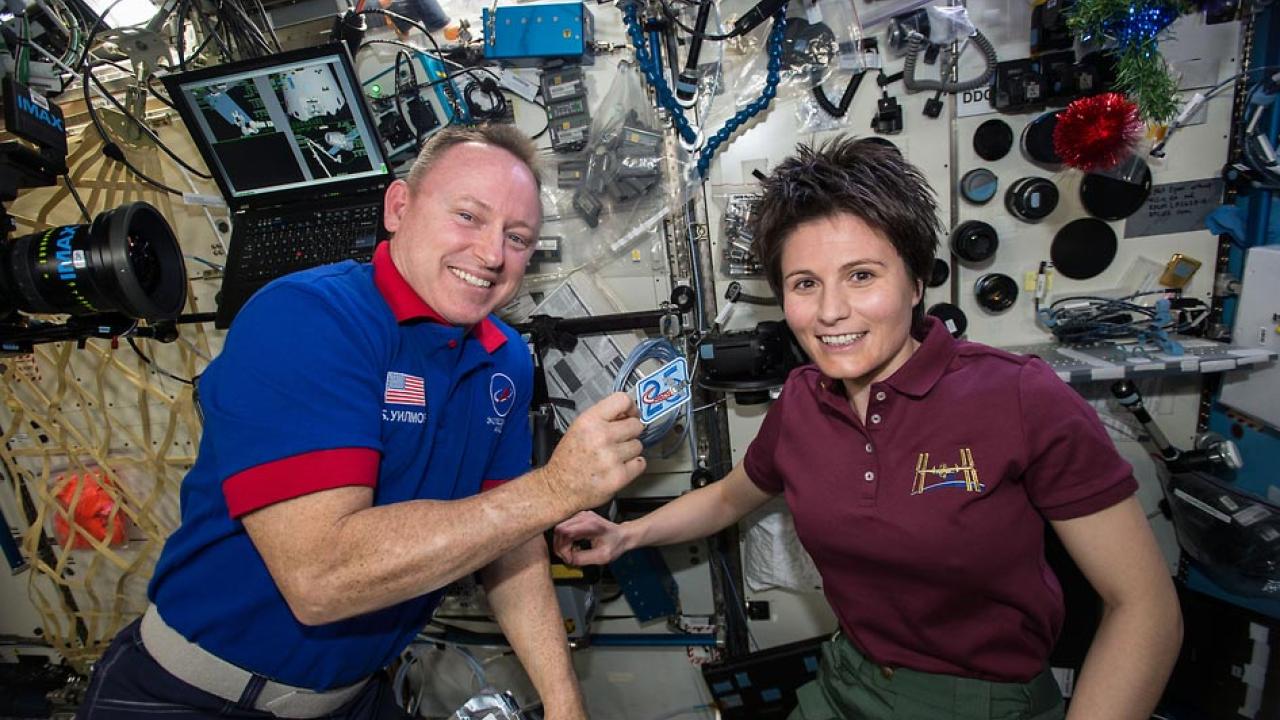“UC Davis, hearing you loud and clear!”
That was the message from space delivered last Thursday, Feb. 5, by crew members from the International Space Station to a capacity crowd of engineering students in Kemper Hall.
With astronauts Barry “Butch” Wilmore, Terry Virts and Samantha Cristoforettiprojected on screen, students had about 20 minutes to ask their questions about technology, space exploration and life in orbit.
The “In-Flight Education Downlink” came courtesy of the NASA Johnson Space Center’s Office of Education, in conjunction with JSC’s Public Affairs Office. Such downlinks are designed to encourage K-16 students to study and pursue careers in STEM (science, technology, engineering and math) fields.
Emceed by UC Davis’ astronaut-professor
It was organized and emceed by four-time shuttle astronaut Stephen Robinson, now a professor of mechanical and aerospace engineering at UC Davis.
Robinson noted that he has been on the other end of a downlink many times, and managed many more from Mission Control, “but this is the first time I’ve done it from this end.”
NASA confirmed it’s the first time an inflight downlink has been held at any UC campus. The event was also broadcast live on NASA’s cable TV channel and streamed live on the agency’s website.
How astronauts prepare for flight
‘You need to be fit and in excellent health. If you were not healthy, you would not have a good time up here.’
— Astronaut Terry Virts
Questions were submitted in advance. One by one, students stepped up to the mic to speak. The topics ranged from technical questions about radiation shielding and using 3-D printers in microgravity, to questions about life on the station and how astronauts prepare for flight.
“You need to be fit and in excellent health,” Virts said. “If you were not healthy, you would not have a good time up here.”
Robinson took a few questions himself after the astronauts signed off.

Huge technology driver
Human spaceflight, he said, has been a huge technology driver: “It’s a very hazardous environment, and your survival all comes down to engineering.”
Among other research, the station is a laboratory to study the human body — for example conditions that effect bone or muscle mass, and disturbances of the neurovestibular system that controls balance and our sense of orientation.
While astronauts work long hours in orbit, there’s time for recreation, too. In microgravity, Robinson joked, “everything’s a toy.”
Looking at Earth
‘And then there are the windows. Looking at Earth is one of the greatest gifts.’
— Professor Steve Robinson
“And then there are the windows. Looking at Earth is one of the greatest gifts,” he said.
The In-Flight Education Downlink program began roughly 15 years ago and averages 12 to 15 events per year.
Miss the linkup? You can catch the International Space Station flying overhead at night. It’s the third-brightest object in the sky and appears to be a fast-moving airplane, although it is actually much higher and moving much faster than any plane.
Davis is one of the more than 6,700 international locations tabulated by the Johnson Space Center. Check out the “lookup times.”
